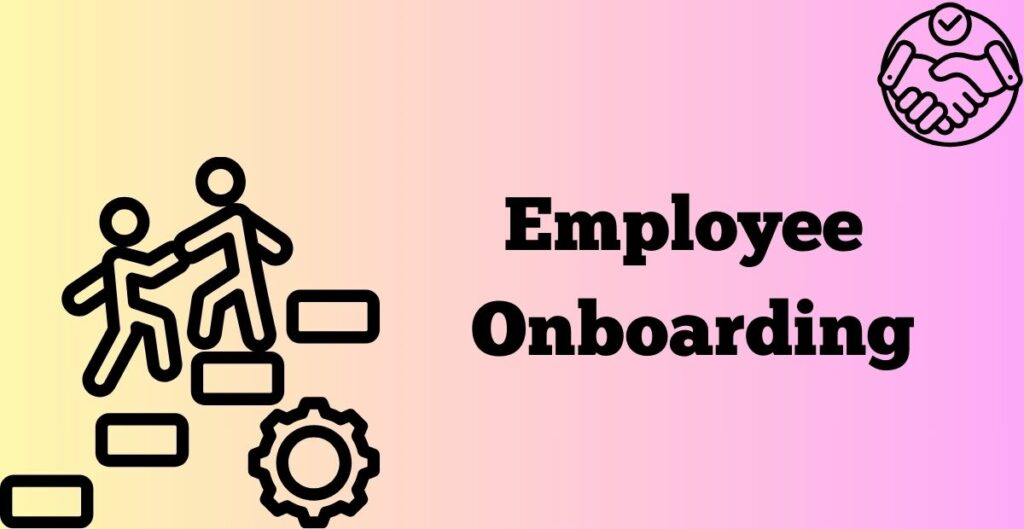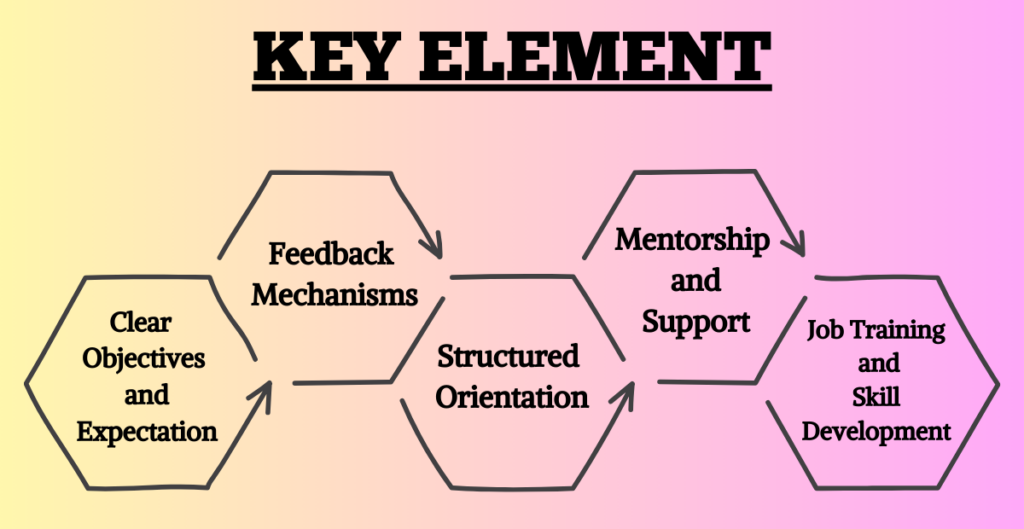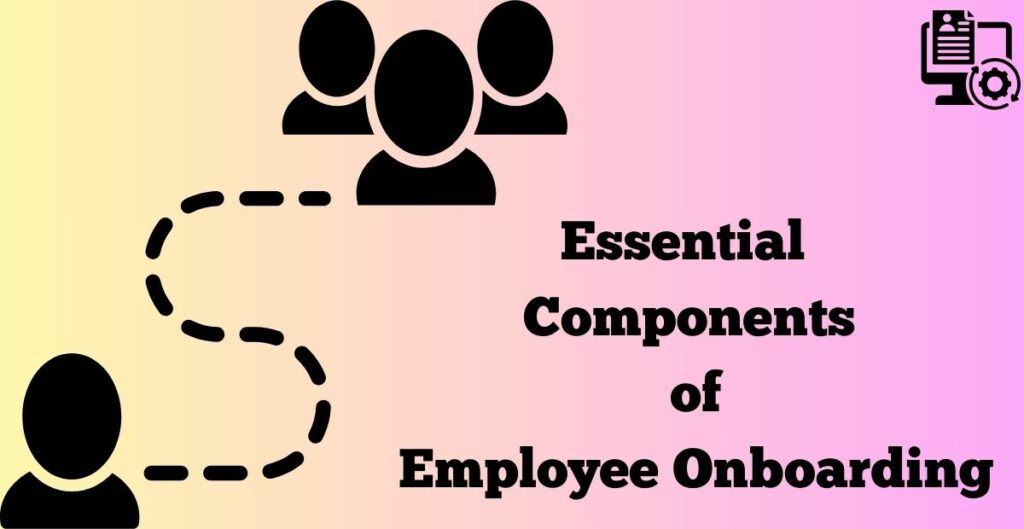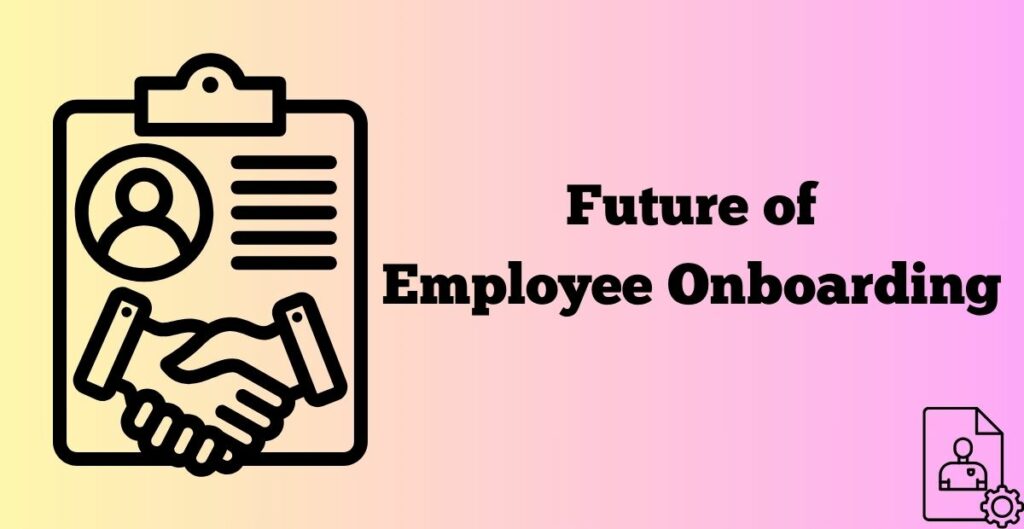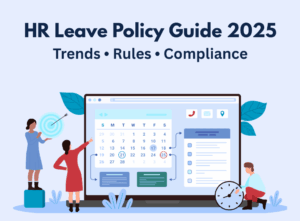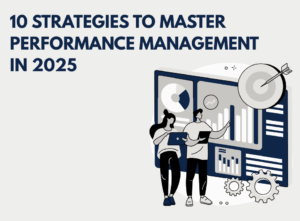Understanding Employee Onboarding
What is Employee Onboarding?
Employee onboarding implies a cycle of activities, which a recruit practices in the process of moving from being a candidate to becoming a team player ready to contribute to the company’s success. This process is not brief but includes orientation, paperwork, and various events all of which acknowledge the social component that gives the new employee a deeper understanding of the corporate culture, job responsibilities, and their role in the organization and the teams they work with.
The Importance of Effective Employee Onboarding:-
- Retention: Hence, trained people along with the right orientation helps not only to bring the turnover rate down but also often the recruits become confident employees, who then tell others they communicate this feeling correctly.
- Productivity: Employee Onboarding allows both the new team members and their trainer to be able to grasp the necessary information quickly, just like they fit well into their new work environment.
- Engagement: One of the approaches of the company which places an employee onboarding program specifically designed for the new staff members in the center is to give a chance for them to establish a greater degree of involvement and attachment which elevates their job satisfaction.
- Culture Integration: Employee onboarding is aimed at making an employee understand the company quite well including its values, mission, and culture to help define employee interests based on the organization.
- Brand Image: Specifically, the employee onboarding process that is carried out successfully will help the image of the organization and will attract the fact that more job applicants join the company and, after all, its recognition grows to a big extent.
Key Elements of a Successful Employee Onboarding Process:-
- Clear Objectives and Expectations: Create a presentable and understandable goal structure for the employee onboarding process that concerns learning goals, performance expectations, time-boundedness, etc.
- Structured Orientation: Organize a general introduction to the company policies, standard operating procedures, and the organizational structure that carries out the same goals.
- Job Training and Skill Development: Use the training programs to help trainees understand what they need to do to do well in their jobs and also provide them with other helpful lessons.
- Mentorship and Support: A mentorship system or a buddy system training could thus be set to take the new employees around the office building, get them the answers they ask, and regularly offer some support to keep them on track.
- Feedback Mechanisms: Design avenues of communications that attempt to request employee’s responses on how they feel they have settled in and find out any possible challenging areas of the settlement process.
Preparing for Employee Onboarding
Developing an Employee Onboarding Strategy
It is essential to prepare a thorough employee onboarding strategy in advance if you do not want to let new employees venture into the office, or the online work platform, without clear guidelines. This should provide for consistency with the organization’s general objectives having taken care of the unique demands of newly admitted employees. Key considerations when developing an employee onboarding strategy include:
- Assessing the most crucial persons who are stakeholders in the employee onboarding process.
- Setting the goals and outcomes to be achieved during the onboarding program. / Joining cultivating the correct learning environment, and the hiring process itself are three important aspects to consider when improving employee onboarding.
- Personalizing the employee onboarding procedures, depending on the employee’s role and the department they are working in an organization
- The inclusion of comments from previous onboard processes to use as a reference for making any enhancements in the current onboarding process.
- Ensuring automation in most of the administrative tasks and online portal for starters.
Setting Clear Objectives and Expectations
Clear communication is imperative to a successful employee onboarding. The new hires should be aware of what is expected of them from the starting from first day whereas managers should have a clear view of the goals and objectives of each new employee.it involves:-
- Having a mission statement, job descriptions, performance expectations, and the main duties depicted.
- Supporting the adequate resources and assistance necessary for new hires to succeed.
- One of the hiring team’s tasks will be to set measurable goals and milestones for the new members that will help them track their development.
- To open up space where managers and new hires can have one-on-one discussions to address any questions and concerns about the performance expectations.
Creating an Employee Onboarding Timeline
The employee onboarding calendar requires completion of the process in a timely way which is structured, efficient, and also comprehensive. This timeline should cover the period from the time an offer is accepted to the end of the probationary period and may include:
- Pre-boarding activities like sending welcome packages and getting all the required documents are also done.
- Through first-day orientation activities such as introductions to team members, company norms, and workspace adjustments, these activities provide the overarching framework to promote our goal.
- Weekly or monthly implementation of the training program, training evaluations, and goal setting. The performance shall be evaluated monthly.
- Regular follow-ups with the managers or in-house mentor will help in getting feedback and support frequently.
- Moving from the initial orientation to follow-up and support for the person to develop properly into their role and occupy a place in the organization.
Essential Components of Employee Onboarding
Orientation and Company Overview
- Company History and Mission: Since the first day of business, we have been driven by the company’s uniqueness and values, plus, our ultimate goals have been to offer the best quality products.
- Organizational Structure: Kick-start employee onboarding by allowing new hires to closely work with the key departments, teams, and reporting line individuals.
- Facilities and Resources: Acquainting new employees with the office space; locating offices, amenities available, and tools they will use going forward.
- Company Policies and Culture: Communication regarding the ultimate policies, for example, dress code, attendance, and ethics, must be also made while cultural norms and expectations are indicated.
Job Training and Skill Development
- Role-Specific Training: Giving students practical experience around their job duties, tasks, and work processes.
- Technical Skills Development: Educating the newcomer on software, systems, and tools directly related to his or her job.
- Soft Skills Development: The acquisition of social skills, communication skills, teamwork, and problem-solving abilities through this process.
- Cross-Training Opportunities: Bringing in newly hired people to the parts of the organization that are beyond their direct role to support variability and teamwork.
Introducing Policies, Procedures, and Compliance
- Employee Handbook Review: Providing a new employee with a briefed employee handbook overview covering policies such as attendance, leave, benefits, employee conduct, etc.
- Safety and Security Procedures: Educate employees about emergency procedures, bodily safety requirements, and data security standards.
- Legal and Regulatory Compliance: Organizing seminars and workshops on the applicable laws and regulations in the company’s industry, like privacy regulations, and industry-related standards among others.
- Ethics and Conduct Standards: Communicating expectations regarding ethical behaviour, conflicts of interest, and reporting procedures for misconduct.
Building Relationships Through Employee Onboarding
Mentorship and Buddy Programs
Connecting new employees with waiting staff via a mentorship program or buddy scheme will help to create a more positive employee onboarding process. Use our automated essay grading system to receive quick and accurate feedback on your writing. Whether you’re drafting a business plan, crafting a personal statement, or working on a research paper, our AI-powered tool can provide valuable insights to help you improve your writing skills. This involves:
- Assigning Mentors: Ensuring that new employees comprise the starting line-up and are matched to old hands for the roles of support, advice, and supervision.
- Buddy Systems: Exhibiting a “buddy” mentality means teaming new hires with colleagues and peers who will help do the work making the new hires feel more comfortable around the organization.
- Structured Support: A framework must be created to guide both mentor-mentee involvement and the activities, which include regular check-ins, goal-setting sessions, and feedback opportunities.
Team Integration and Collaboration
Expanding an employee’s ties with their team members and inculcating within them a sense of ‘belonging’ are the critical factors necessary for successful employee onboarding. This may include:
- Team Introductions: Organizing team meetings or social functions aimed at familiarizing the new entrants with the management and fellow team members as well as cultivating a sense of camaraderie.
- Collaborative Projects: Launching new employees into team projects and cross-functional endeavours can help them get connected, set up relationships, and participate in mutual goals.
- Open Communication Channels: Ensuring that recruits get the guidance and assistance they need as well as help them interact freely among the team.
Communicating with New Hires Effectively
Clear and effective communication is the central aspect that ensures that the new hires get information, support, and somewhere to engage effectively. This involves:
- Regular Check-Ins: Organizing half-hour meetings between an employee and a manager to facilitate the conversation of current development, and help with potential problems and feedback.
- Transparent Expectations: Of course, clearly explain what duties and performance requirements are expected as well as the organization’s goals to begin employees.
- Accessibility: Being able to provide resources and support channels with contact info available to new hires instantly is very critical because they can have easy and instant access to assistance and information.
- Feedback Mechanisms: Ensuring information elicitation on the recently hired employees via surveys, suggestion boxes, or open-door policy.
The Future of Employee Onboarding
Trends and Innovations in Onboarding Practices
As technology continues to advance and workplaces evolve, several trends and innovations are reshaping the landscape of employee onboarding: Given the increasingly autonomous and transforming natural environment, some development trends and innovations arising are shaping the way of work for newcomers to organizations:
- Virtual Employee Onboarding Platforms: Virtual employee onboarding is a cutting-edge form of digital training for remote and virtual work performance objectives. The platform is equipped with efficient online modules, virtual signatures, and virtual welcome meetings by major stakeholders, all geared to achieving high standards in remote and virtual work performance.
- Gamification: While actively monitoring a potential employee – or a newly hired one – through employee onboarding tests that consist of quizzes, challenges, and interactive simulations – the chances of being remembered by him or her are higher.
- Personalization: Granting employee onboarding training plans that are time-dependent and personalize the new employees’ competencies, teaming them up with experienced members of the staff who can help them to learn from them and creating an intelligent learning system that will be stepwise and lead to the employees’ increasing competencies.
- Data-Driven Insights: Through data analysis people competent in monitoring and assessing will be involved to address issues where necessary in terms of bettering the HR procedure and determining nontransparent ones for employee onboarding success.
- AI and Chatbots: AI and chatbots are being spontaneously used on platforms that handle their recruit employee onboarding processes to aim at the automation of administrative tasks and to support the hiring staff in case of need for fast and personalized assistance.
Adapting to Changing Workforce Dynamics
As the workforce becomes more diverse, dynamic, and distributed, organizations must adapt their employee onboarding practices to accommodate these shifts:
- Remote Onboarding: Naturalizing the settlement of tools and the allocation of specific strategies to the mix of remote them—being this integration process necessary to maintain the sense of interconnection and being connected to the newcomers in a remote place.
- Flexible Onboarding Models: Through the offering of a tailored onboarding experience incorporating multi-channel opportunities such as self-guided online modules, blended learning options, and direct/remote-support systems, organizations can ensure that they meet the diversity of the setting in contemporary work arrangements.
- Globalization: Including processing of the employee onboarding standards including cross-border cultural characteristics, and language variability problems, on top of the specific rules that relate to the increasing international environments in many organizations.
- Gig Economy Integration: The Organization should put policies and instruments in place to ensure that the diverse stream of contract, gigs, and freelance workers will be well integrated and they can cooperate to the aims of the organization if not carry on the work.
Predictions for the Evolution of Employee Onboarding Processes
Looking ahead, the evolution of employee onboarding is expected to follow several key trajectories:
- Enhanced Automation: The improvement of work automation is achieved through moving on to more automation solutions, such as robotic process automation (RPA) and AI-driven workflows that take business-side activities to the computer, reduce manual labour, and increase efficiency.
- Augmented Reality (AR) and Virtual Reality (VR): Putting in place AR & VR technologies for Immersive Board assignments that use multimedia means to help trainees get educated about various areas within the business and still see trainee-simulated activities, as well as, participate in tickling content.
- Continuous Onboarding: The same way a cycle works is the same way multi-dimensional learning works. Through further career journeys, people being a coach, a mentor, and someone who will be in charge of performance management is the new normal.
- Emphasis on Employee Experience: Put attention to the fact that employee experience contributes to organizational goals in the initial day by the employees, where they aim at making friends, boosting well-being, and alignment of their goals with those of the organization. The organizational and personal values, goals, and objectives have the same link.
Crafting an Engaging Employee Onboarding Experience
Personalizing the Employee Onboarding Process
Personalization is the backbone of a great employee onboarding experience that leaves every new employee impressed. It is personalization, which guarantees that every process and information presented to new hires is well-understood and tailored to their individual needs and expectations. Strategies for personalizing the employee onboarding process include:
- Tailored Training Plans: Customization of training plans is a product of the employment role, level of experience attained, and individual’s preferred learning approach.
- Customized Welcome Messages: To encourage a sense of belonging and so appreciate the new hires, the manager can proceed to welcome them with personalized messages or videos from management, team members, or even a company executive.
- Adaptive Learning Modules: Impressing the workings of an adaptation technology that can modify the content and speed of learning depending on a new hire’s progress and accuracy.
- Mentorship Matches: Establishing a mentorship program where new employees have mentors who are in a similar position and share the same mindset or career goals to enable the creation of meaningful relationships and connections.
Utilizing Technology for Seamless Employee Onboarding
Nowadays technology is the key player in successful employee onboarding procedures providing the necessary tools for automation facilities, very fast communications, and company order management. Ways to utilize technology for seamless employee onboarding include:
- Online Employee Onboarding Portals: Creating the most necessary steps in the onboarding of a new hire like an online portal or platform where new hires can fill in the form, review training material, and revisit the company policies before they begin their work duties.
- Virtual Training Modules: Hiring new staff members can be time-consuming and costly, therefore hosting interactive online training modules or e-learning courses which new hires can complete at their own pace and from anywhere with an internet connection, can be faster and more effective.
- Collaboration Tools: By leveraging collaboration tools including video conferencing, instant messaging, and project management software to enable inter-team communication and collaboration which can often happen particularly between teams that are remote or distributed.
- Mobile Apps: Creating mobile apps that can give new staff access to essential materials anytime and anywhere which include training resources, information about the company, and other company resources.
Incorporating Company Culture into Employee Onboarding
Company culture exercises eminent influence on the employee experience and generally brings about a feeling of loyalty toward the brand. Establishing a basing line for the newbies, will make the go-getters understand and adapt to the characteristics, traditions, and policies of the organization. Strategies for incorporating company culture into onboarding include:
- Cultural Immersion Activities: Organizing activities like team building sessions, social events, as well as cultural workshops which puts the new hires in the spotlight to make them feel the company’s values, purpose, and mission.
- Employee Testimonials: A sharing of stories and experiences from current employees about the organization’s culture, type of work environment as well as the growth opportunities presented by the jobs at hand.
- Leadership Engagement: Inspiring senior leaders to follow the employee onboarding process by the way they engage directly with the organization’s culture with their insights, principles, and visions.
- Recognition and Appreciation: Promoting and increasing the effectiveness of new hires who show the company’s culture and values through public thanksgiving, prizes, or rewards.
Overcoming Common Employee Onboarding Challenges
Managing Remote Onboarding
Remote employee onboarding shows off specific difficulties, yet together with the specialized strategies organizations can deliver a good employee welcome for the new hires. Key considerations include:
- Clear Communication: Establishing communication channels and types of communication that could be used – email, messages, or video-conferencing. Those channels and types should be clear and incorporated with expectations – regular check-ins.
- Virtual Training: To facilitate this, training modules, virtual resources, and easily accessible tools that new hires can get far away from the workplace should be made available to ensure that they are equipped with the needed knowledge to succeed.
- Technology Integration: Having the technology to help with licensing via electronic documents, tours of the place of work online community, and collaboration tools.
- Buddy Systems: Combination of newcomers to the remote mentors and acquaintances who can guide plus assist them during their employee onboarding.
- Cultural Integration: Team members often feel emotionally disconnected because they work from different locations or communicate virtually. Therefore, we recommend the management organize virtual team-building activities, social events, or cultural workshops that can create a sense of team spirit as well as trust.
Handling Cultural and Generational Differences
Ensuring mutual understanding and respect, regardless of the cultural and generational line-up is the key to promoting a harmonious and tolerant work climate. Strategies for addressing these differences during employee onboarding include:
- Cultural Sensitivity Training: Organizations can offer cultural awareness training to enable recruits to understand and accept the distinct perceptions, perspectives, and communication styles of their co-workers.
- Cross-Cultural Mentoring: Mentoring new employees with people from different cultures and thereby promoting the incorporation of cross-cultural learning and mutual assistance.
- Generational Awareness: Realizing that different generations focus on different career issues, having distinct communication methods, and using distinct digital tools, while at the same time giving place for a dialogue between these generations. The key element is creating an environment for the creation of mutual trust.
- Open Dialogue: Promoting open and non-judgmental dialogues concerning the inclusion of community and generation, arranging opportunities for every worker to share their experience, viewpoint, and vision with other workmates.
- Inclusive Policies: By putting in place policies that emphasize the diversity, equity, and feeling of the employees who are of various cultural and generational backgrounds being important, ensure that all employees whether old or young alike can feel relevant and respected as important contributors to the growth of the organization.
Addressing Employee Onboarding Burnout and Attrition
The employee onboarding burnout, as well as the retention issues, necessarily ruin the onboarding effectiveness and cause a higher rate of turnover.
- Balanced Workloads: Pay attention to the fact that trainees do not face the overload of work duties or unrealistic expectations during the training period, providing them with the required assistance.
- Flexibility: Through flexible work hours, schedules, and assignments to match the different needs and interests of employees at new hires by having less stress and burnout.
- Wellness Initiatives: Developing wellness initiatives and programs to improve the physical, mental, and emotional health of new employees, including sessions on mindful awareness, challenges on movement, or assistance in counselling.
- Recognition and Rewards: Having new hires who show outstanding performance, growth, and devotion during the employee onboarding appreciated and greatly rewarded is rewarding and encourages them to do better which brings in motivation and engagement.
- Feedback Mechanisms: Providing various options such as surveys, focus groups, and meetings for new hires to share their experience of onboarding programs so that they can provide feedback and their recommendations can be implemented to take care of any issues and challenges they may face.
